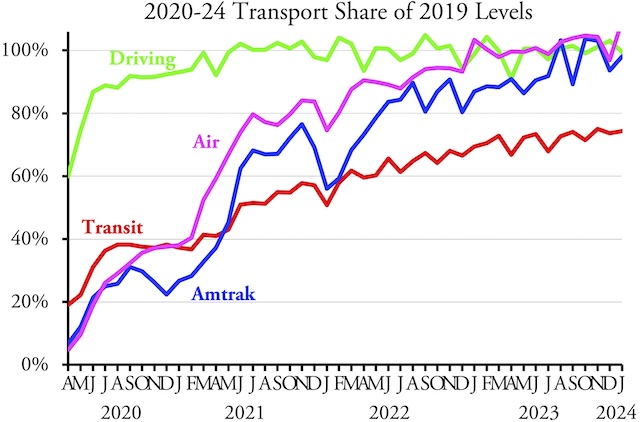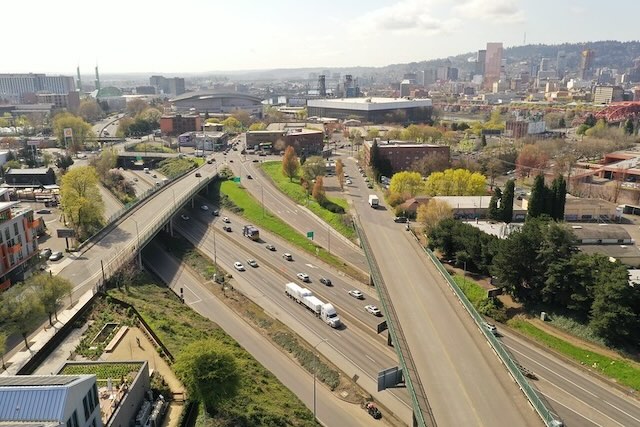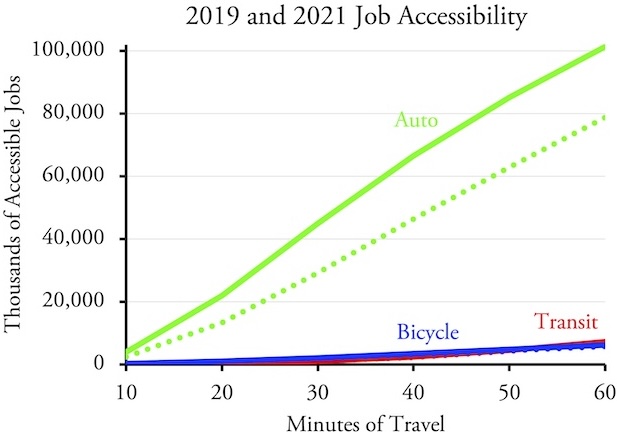Americans took 7.7 percent more airline trips in May 2024 than the same month in 2019, according to TSA passenger counts. While the release of airline passenger-mile data lags other data by a couple of months, March data indicate that domestic flying passenger-miles were 5.5 percent greater than in 2019 while international passenger-miles were 1.5 percent short of 2019. The number of international trips was 4.3 percent greater than in 2019, indicating that people who are traveling internationally are going to closer destinations.
Americans also drove 2.6 percent more miles in May 2024 than May 2019, according to data released last week by the Federal Highway Administration. Rural miles of driving were 8.8 percent greater than before the pandemic while urban miles were just 0.2 percent short of May 2019. Continue reading

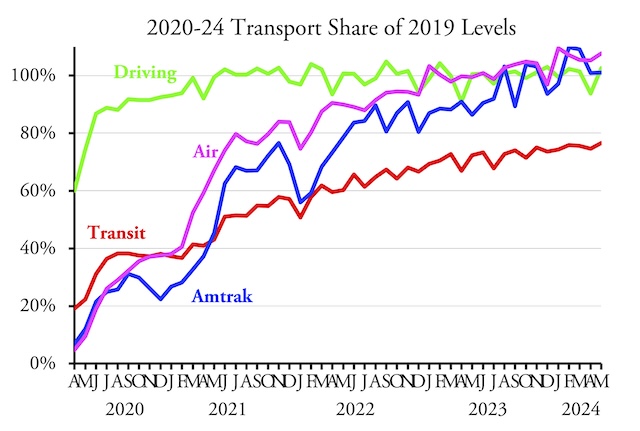
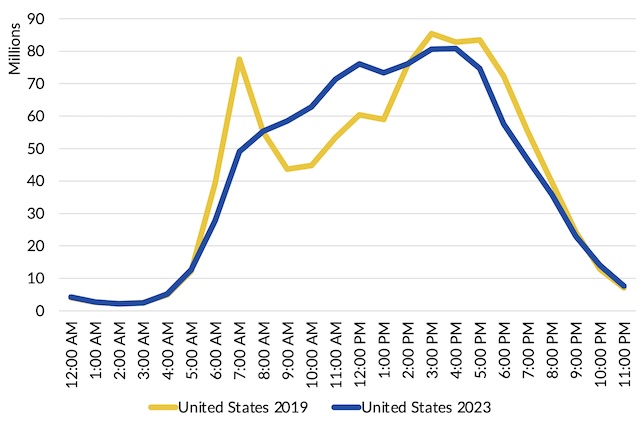
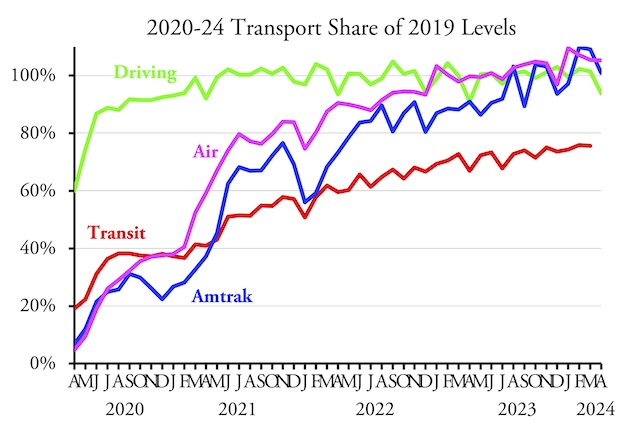
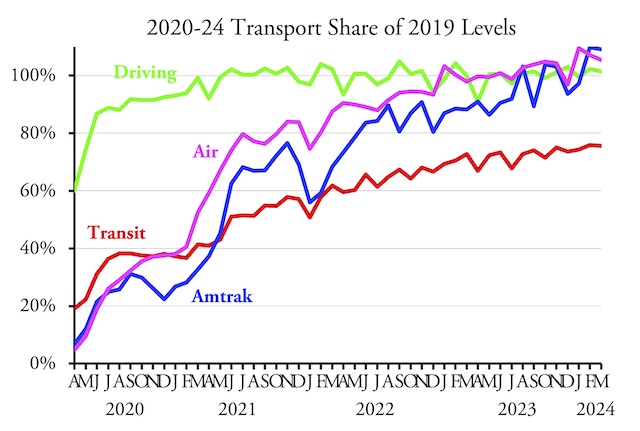
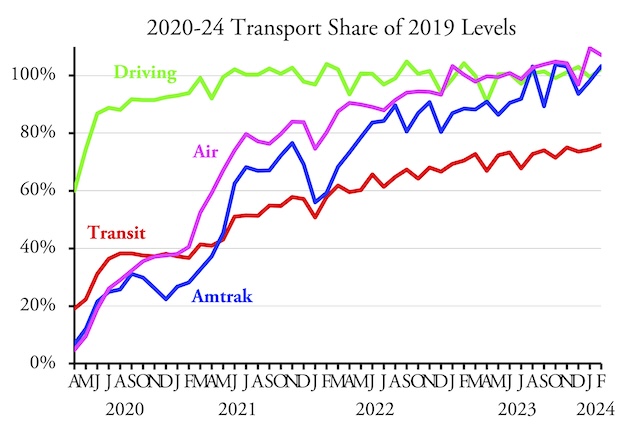 The February 2024 line for driving is obscured by the line for Amtrak, but both are approximately 102 percent.
The February 2024 line for driving is obscured by the line for Amtrak, but both are approximately 102 percent.
